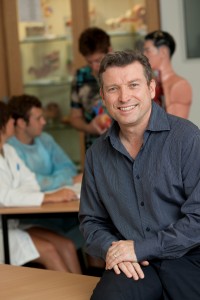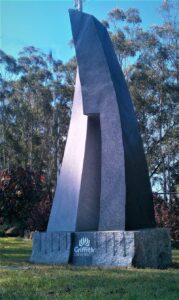
Chair of Anatomy Professor Mark Forwood.
Griffith University’s Body Donation Program reached a milestone of 600 donations since the program began in 2006, representing the ability to provide a quality education to thousands of future health professionals.
Just as donating your organs may save a life, donating your whole body contributes to educating the next generation of health professionals who will undoubtedly go on to save lives every day.
Providing practical opportunities to study the human body in a controlled educational environment, Chair of Anatomy Professor Mark Forwood said providing consent to become a living donor is the first step to making an invaluable contribution to healthcare at the end of life.
“Our researchers, scientists and health practitioners have dedicated their working lives to advancing scientific and medical knowledge, promoting health, and finding cures for human illness,” Professor Forwood said.
“Studying real human bodies is an invaluable approach to learning anatomy for most health care workers including physicians, surgeons, dentists, therapists, exercise scientists and other allied health workers.
“For medical students, anatomical donations not only help to advance clinical medicine, surgical techniques or pathology, they also contribute to learning medical skills such as clinical history taking and examination, as well as clinical reasoning that develops diagnostic judgment and patient management.
Anatomical research generates scientific knowledge both nationally and internationally, thereby improving healthcare and alleviating suffering.
“Only about 50 to 70 per cent of registered donations are accepted at the time of death due to stringent regulations and screening criteria, so it is imperative more people consider registering for the program.

Griffith University Memorial Garden has been established within the grounds of the Southport Lawn Cemetery.
“A donation may not be accepted for reasons such as body weight, time limit after death or because the donor had a specific medical condition preventing successful scientific embalming.
“It is important to discuss your decision to donate with your family because in the end, it is the next of kin who has the final say about whether your body is donated or not.
Donors can nominate a limited term of up to three years, after which the ashes can be returned to the family, or an indefinite donation.
In the case of an indefinite donation, long-term donations will be scattered at the Southport Lawn Cemetery where a granite sculpture stands to memorialise loved ones; and where family members can arrange for a plaque to be placed.
“Occasionally surviving family members are surprised to learn that the body of their loved one cannot be returned to them for a typical funeral, but will be cremated and the ashes made available. It is therefore important to make sure your family is familiar with the limitations of the program and aware of the process.”
Living donors can still register to be an organ donor and this allows experts to assess whether your organs can save a life or if your whole anatomical donation is best suited for education purposes at the time of your passing.
Every year Griffith expresses gratitude to donors and their families by holding a thanksgiving service to celebrate and acknowledge the contribution that donors make to enrich the education of health students and professionals.
Griffith covers all operational costs of the Body Donation Program, and no costs are passed on to a donor’s estate including transfers, registration, and cremation.
Living donors can withdraw their participation from the program at any time by notifying the school in writing.
